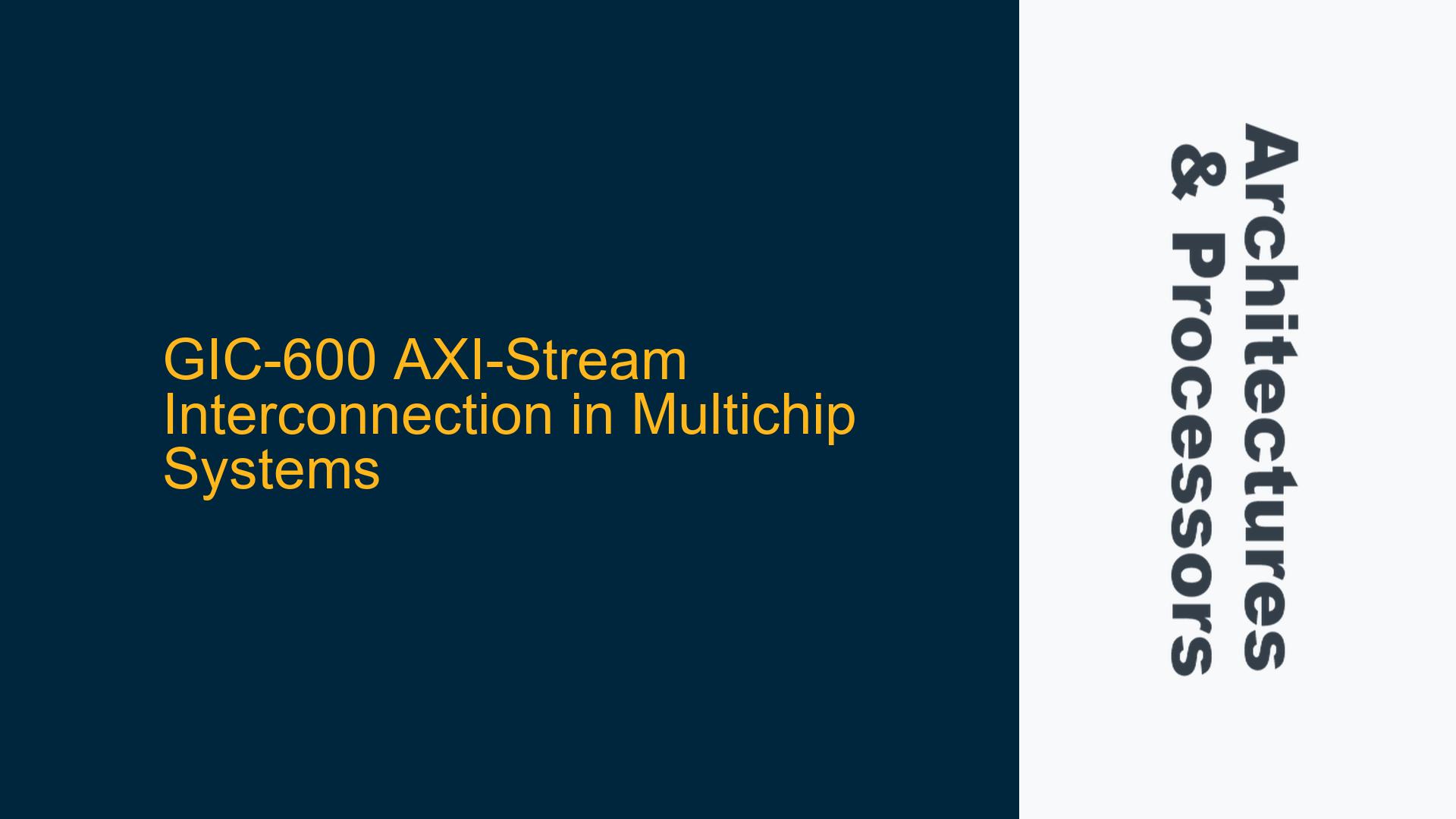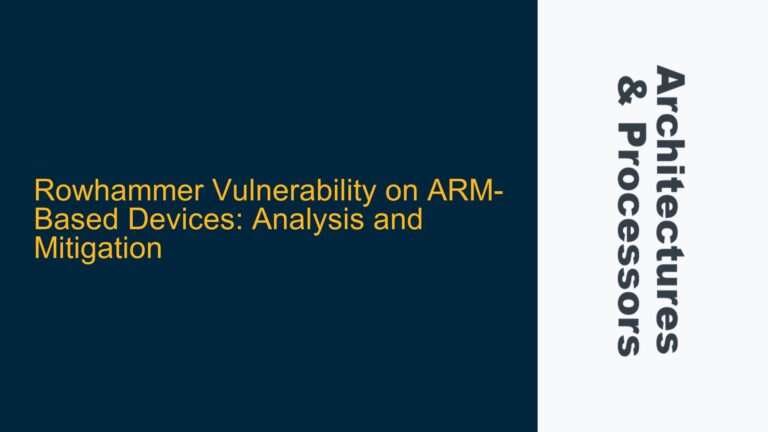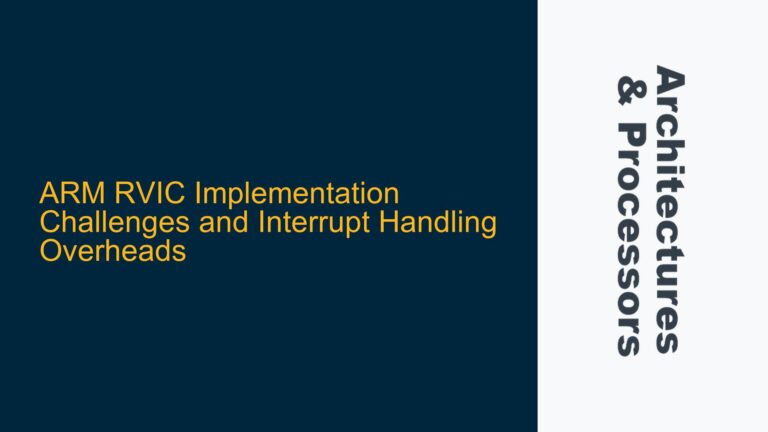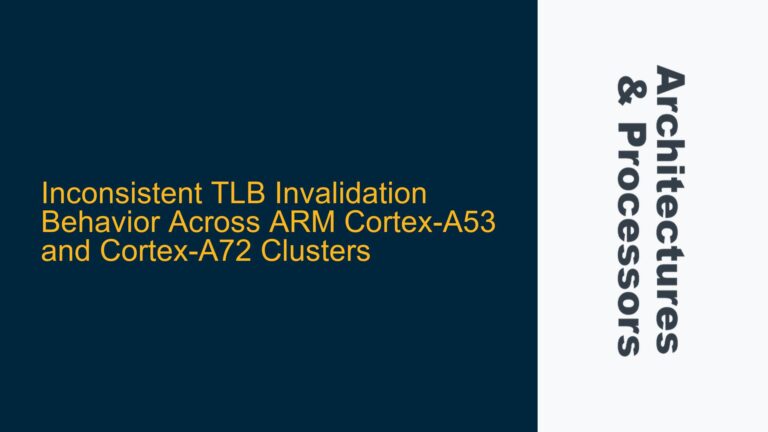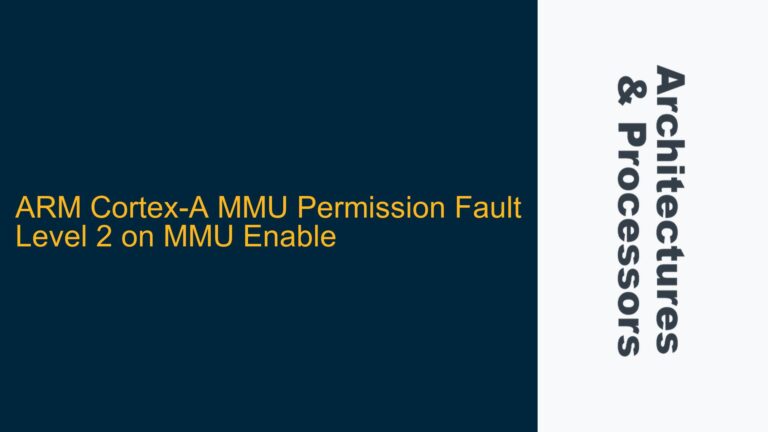GIC-600 Distributor Communication via AXI-Stream in Multichip Configurations
The ARM Generic Interrupt Controller 600 (GIC-600) is a highly scalable interrupt controller designed for complex systems, including multichip configurations. In such systems, multiple GIC-600 Distributors must communicate with each other to ensure coherent interrupt handling across chips. The GIC-600 Technical Reference Manual specifies that this communication occurs through the AXI-Stream interface. However, the exact implementation details of how these AXI-Stream interfaces interconnect in a multichip system are not explicitly outlined, leading to potential confusion during system design and integration.
The AXI-Stream protocol is a unidirectional point-to-point protocol designed for high-speed streaming data transfer. Unlike the AXI4 protocol, which supports multiple transactions and addressing, AXI-Stream is optimized for continuous data flow, making it suitable for applications like interrupt distribution in multichip systems. In the context of GIC-600, the AXI-Stream interface facilitates the transfer of interrupt-related data between Distributors, ensuring that interrupts generated on one chip are correctly propagated to the appropriate processors on other chips.
The challenge lies in understanding how the AXI-Stream interfaces of multiple GIC-600 Distributors are physically and logically connected in a multichip system. This includes considerations such as signal routing, protocol compliance, and synchronization mechanisms. Without a clear understanding of these aspects, system designers may face issues such as interrupt latency, data corruption, or complete communication failure between chips.
AXI-Stream Signal Routing and Protocol Compliance Issues
One of the primary causes of confusion and potential issues in GIC-600 multichip systems is the improper routing of AXI-Stream signals between Distributors. The AXI-Stream protocol defines a set of signals, including TVALID, TREADY, TDATA, and TLAST, which must be correctly connected and managed to ensure reliable data transfer. In a multichip system, these signals must traverse physical boundaries between chips, introducing challenges such as signal integrity, timing constraints, and protocol compliance.
Signal integrity is critical in high-speed interfaces like AXI-Stream. Any degradation in signal quality due to long traces, impedance mismatches, or crosstalk can lead to data corruption or loss. Timing constraints are equally important, as the AXI-Stream protocol relies on precise handshaking between TVALID and TREADY signals. Any deviation from the specified timing requirements can result in communication failures.
Protocol compliance is another potential issue. The AXI-Stream protocol has specific rules for data transfer, including the use of TLAST to indicate the end of a packet. If these rules are not strictly followed, the receiving Distributor may misinterpret the data, leading to incorrect interrupt handling. Additionally, the GIC-600 may have specific requirements for the format and content of the data transmitted over the AXI-Stream interface, which must be adhered to for proper operation.
Another potential cause of issues is the lack of synchronization mechanisms between Distributors. In a multichip system, each chip may operate on its own clock domain, leading to potential clock domain crossing (CDC) issues. Without proper synchronization, data transmitted over the AXI-Stream interface may be sampled incorrectly, leading to data corruption or loss. This is particularly critical in interrupt handling, where timely and accurate data transfer is essential.
Implementing Robust AXI-Stream Interconnections for GIC-600 Distributors
To address the challenges of AXI-Stream interconnection in GIC-600 multichip systems, several steps must be taken to ensure reliable and efficient communication between Distributors. These steps include careful signal routing, protocol compliance, and the implementation of synchronization mechanisms.
Signal Routing and Integrity
The first step in implementing a robust AXI-Stream interconnection is to ensure proper signal routing and integrity. This involves careful PCB layout to minimize signal degradation and meet timing requirements. High-speed signals such as TVALID, TREADY, TDATA, and TLAST should be routed with controlled impedance traces, avoiding long runs and minimizing crosstalk. Differential signaling may be used for critical signals to improve noise immunity.
Signal integrity analysis should be performed using tools such as SPICE simulations or time-domain reflectometry (TDR) to identify and mitigate potential issues. This analysis should include considerations for signal rise/fall times, propagation delays, and reflections. Additionally, termination resistors should be used as needed to match the impedance of the transmission lines and reduce signal reflections.
Protocol Compliance and Data Formatting
Ensuring protocol compliance is critical for reliable AXI-Stream communication. The GIC-600 Technical Reference Manual should be consulted for specific requirements regarding the format and content of data transmitted over the AXI-Stream interface. This includes the use of TLAST to indicate the end of a packet and any specific data encoding or framing requirements.
To ensure compliance, the AXI-Stream interface should be implemented using a verified IP block or custom logic that has been thoroughly tested against the protocol specification. This includes testing for edge cases such as back-to-back transactions, idle cycles, and error conditions. Additionally, the implementation should include checks for protocol violations, such as invalid TVALID/TREADY handshaking or incorrect TLAST usage.
Clock Domain Crossing and Synchronization
In a multichip system, each GIC-600 Distributor may operate on its own clock domain, leading to potential CDC issues. To address this, synchronization mechanisms must be implemented to ensure that data transmitted over the AXI-Stream interface is correctly sampled by the receiving Distributor.
One common approach is to use dual-clock FIFOs (First-In-First-Out) buffers to handle CDC. The transmitting Distributor writes data to the FIFO using its local clock, while the receiving Distributor reads data from the FIFO using its local clock. The FIFO should be designed to handle the maximum expected data rate and include appropriate synchronization logic to prevent metastability.
Another approach is to use a common reference clock for all Distributors in the system. This eliminates the need for CDC but may not be feasible in all systems due to physical constraints or design requirements. If a common reference clock is used, care must be taken to ensure that clock skew and jitter are within acceptable limits to avoid timing violations.
Testing and Validation
Once the AXI-Stream interconnection has been implemented, thorough testing and validation are essential to ensure reliable operation. This includes both simulation and hardware testing.
In simulation, the AXI-Stream interface should be tested under a variety of conditions, including normal operation, edge cases, and error conditions. This includes testing for protocol compliance, signal integrity, and CDC issues. Simulation tools such as ModelSim or VCS can be used to create testbenches that simulate the behavior of the GIC-600 Distributors and the AXI-Stream interface.
Hardware testing should be performed on the actual system to validate the implementation under real-world conditions. This includes testing for signal integrity, timing, and protocol compliance using tools such as oscilloscopes, logic analyzers, and protocol analyzers. Additionally, stress testing should be performed to ensure that the system can handle the maximum expected data rate and interrupt load without errors.
Debugging and Troubleshooting
Despite careful design and testing, issues may still arise during system integration. To effectively debug and troubleshoot AXI-Stream interconnection issues, a systematic approach should be followed.
The first step is to verify signal integrity and timing using tools such as oscilloscopes and logic analyzers. This includes checking for signal degradation, timing violations, and protocol compliance. Any issues identified should be addressed through PCB layout changes, termination adjustments, or logic modifications.
Next, the AXI-Stream interface should be tested for protocol compliance using a protocol analyzer. This includes checking for correct TVALID/TREADY handshaking, TLAST usage, and data formatting. Any protocol violations should be corrected through logic modifications or firmware updates.
Finally, the system should be tested for CDC issues by monitoring data transfer between Distributors using dual-clock FIFOs or other synchronization mechanisms. Any issues identified should be addressed through FIFO depth adjustments, synchronization logic modifications, or clock domain optimizations.
Conclusion
Implementing a robust AXI-Stream interconnection for GIC-600 Distributors in a multichip system requires careful consideration of signal routing, protocol compliance, and synchronization mechanisms. By following the steps outlined above, system designers can ensure reliable and efficient communication between Distributors, enabling coherent interrupt handling across chips. Thorough testing and validation are essential to identify and address any issues that may arise during system integration, ensuring the overall reliability and performance of the system.
